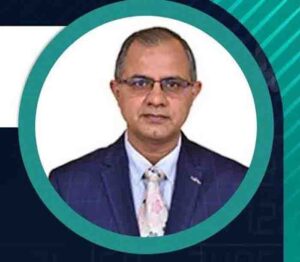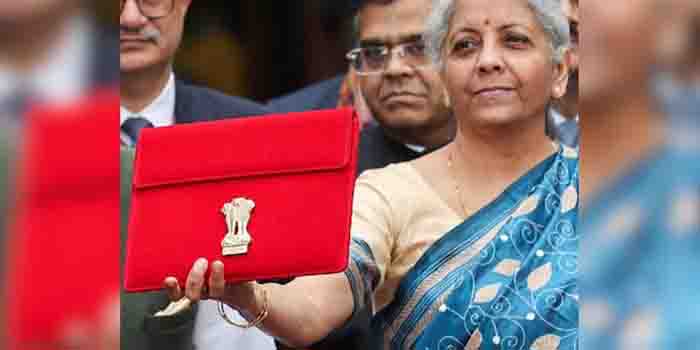CHENNAI/MUMBAI, JULY 19

Finance Minister Nirmala Sitharaman is set to present the full budget for the current financial year on Tuesday, July 23. Expectations are running high as experts predict that Budget 2024 will aim to strike a balance by offering benefits to salaried employees, farmers, women, and the youth. The primary focus is likely to be on job creation and enhancing the rural economy. Additionally, significant announcements regarding infrastructure development, crucial for economic growth, are anticipated.
- Realty sector seeks rationalisation of GST rates, affordable housing
- Streamlining regulations, tax breaks needed to boost manufacturing
- Government likely to allocate more grants to support FMCG industry
- Additionally, significant announcements regarding infrastructure development, crucial for economic growth, are anticipated
Being upbeat about the growth the real estate segment has witnessed over the last couple of years after Covid-19, the sector has high hopes from the budget. Rationalisation of GST rates, further push towards affordable housing and granting a full-fledged industry status are some of the demands of the real estate segment. Additionally, there is also a demand to increase the home loan interest rebate to boost the sector. Many players are also demanding that the clearance window should be streamlined so that things move smoothly in the segment.
Many stakeholders feel that as the real estate sector evolves with innovative technologies and tailored infrastructure, it is crucial for the sector to have an ‘Industry status’ in the Modi 3.0 budget 2024.

Incentivizing sustainable practices and enhancing transparency will further strengthen realty sector: Anuj Munot, CEO & Founder – UrbanWrk
“The 2024 Union Budget is a pivotal moment for the Indian real estate sector that has demonstrated sturdy performance in the last few quarters. We expect significant reforms that will streamline processes, enhance transparency, and drive growth. As NITI Aayog has projected the sector’s market size to reach $1 trillion by 2030, it is crucial for the government to address key issues such as the high input costs of essential materials like steel and cement. Reducing the 28% GST on cement and providing industry status to real estate can lower construction costs and enable developers to access loans at reduced interest rates. Additionally, implementing a single-window clearance system will expedite project approvals and foster a more efficient and investor-friendly environment. These measures will not only spur growth but also contribute significantly to the country’s GDP, increasing the sector’s contribution from 8% to 13% by 2025. Moreover, incentivizing sustainable practices and enhancing transparency will further strengthen the sector’s contribution to the national economy and improve the livelihoods of countless individuals.”

Amore inclusive and dynamic debt market, crucial for India’s economic growth aspirations: Vineet Agrawal, co-founder of Jiraaf
“A robust capital debt market is indispensable to realize India’s ambitious goal of achieving a $5 trillion economy, with retail investors playing a pivotal role in its realization. Currently, their participation stands below 4%, making it imperative to increase this figure fivefold over the next five years. Several measures can bolster this objective. First, eliminating TDS at source on bond repayments would encourage investment by reducing procedural hurdles. Second, extending taxation benefits akin to equity investments—such as inclusion in the 80C deduction limit, tax-free interest income up to a specified threshold, and lower LTCG taxation rates—would incentivize greater participation. Third, facilitating easier digital access to corporate and government securities would democratize investment opportunities, attracting a broader base of retail investors. Lastly, fostering a vibrant buy-and-sell market to enhance liquidity will further bolster confidence and attractiveness in debt instruments. Together, these initiatives can pave the way for a more inclusive and dynamic debt market, crucial for India’s economic growth aspirations.”
Promote fintech segment: Vikas Singh – Chief Collection Officer, Propelld
“Our focus remains steadfast on advancing co-lending partnerships, harnessing fintech innovations, and promoting inclusive access to education loans. These pillars are pivotal in fostering a resilient and digitally empowered financial ecosystem. Hence our expectation from the Union Budget 2024 is for a strategic roadmap and implementation plan that fosters collaborative efforts from all players within the fintech segment.
Realty sector seeks rationalisation of GST rates, affordable housing

It is also critical to include the real estate industry in the GST under a one-nation, one-tax framework: Amit Jain, Chairman and Managing Director, Arkade Developers
“It is also critical to include the real estate industry in the GST under a one-nation, one-tax framework. The sector is crucial to the economy, accounting for around 8 per cent of total GDP. While residential real estate is experiencing a significant surge with historic high numbers, additional tax relief for individuals is essential to combat rising inflationary pressures. This can potentially be accomplished by increasing the deduction for interest on home loans from Rs 2 lakhs to Rs 5 Lakhs. The current surge in interest rates has resulted in higher Equated Monthly Installments (EMIs) for homebuyers, limiting fund utilisation, thereby limiting the potential of the sector at large.”

The credit-linked subsidy scheme under the PMAY which expired in 2022, should be revived to incentivize first-time buyers of affordable homes across cities: Anuj Puri, Chairman – ANAROCK Group
“Many interest stimulants previously extended to buyers and developers of affordable housing have expired in the last two years. This important segment must be revived with high-impact measures like tax breaks for developers so that they will focus more on affordable housing, and for buyers to improve affordability. The credit-linked subsidy scheme under the PMAY which expired in 2022, should be revived to incentivize first-time buyers of affordable homes across cities. This will once again invigorate demand in this segment.”

Streamlining regulatory processes and expediting approvals and clearances would reduce delays: Arshdeep Sethi, President- RMZ Real estate, RMZ Corporation
“Streamlining regulatory processes and expediting approvals and clearances would reduce delays, thereby positively impacting project cost, execution and returns. Extending corporate tax benefits and rationalising long-term capital gains tax would attract investments in this sector is crucial for sustaining long-term growth.”

Merge both PMAY Urban and PMAY Rural schemes for CLSS subsidy: Rishi Anand, MD and CEO of Aadhar Housing Finance Ltd.
“Owing to the rising cost of construction, the government could also consider taking steps such as redefining PSL limits from the current Rs. 35 lakhs in a metro location to Rs. 50 lakhs and Rs. 25 lacs in a non-metro to Rs. 35 lakhs and merging both PMAY Urban and PMAY Rural schemes for CLSS subsidy while keeping the subsidy amount the same. Furthermore, we would also suggest the government redefine the income criteria of EWS to Rs. 5 lakhs and LIG to Rs. 10 lakhs. This was last done in 2015 and now with the evolving times require attention. Finally, we would also suggest the central and state governments work collectively towards creating an affordable housing inventory under the Public Private Partnership which could provide impetus to citizens thereby empowering and encouraging them to opt for home ownership.”












